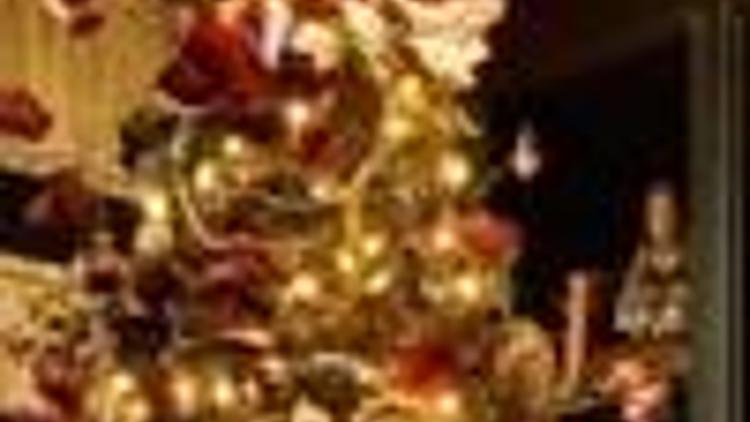History behind the Christmas tree
Güncelleme Tarihi:

ISTANBUL - The Christmas tree morphed into a New Year’s tree in Turkey. In fact an overwhelmingly large proportion of the population are Muslims and don’t celebrate Christmas. So it became a New Year’s tree instead. The New Year is widely accepted and celebrated in Turkey and is an official holiday.
Did human beings worship trees in prehistoric times? Undoubtedly they did since the earliest records from the
By the time the ancient Greeks came on the scene, a whole body of fables existed and many of these have come down to today. For example, the beautiful young boy who admired his reflection in water to such an extent, he was changed into a narcissus. From early times we see trees of life being worshipped perhaps or at least being tended by two men or sometimes a king. And we can trace the tree of life through the millennia, even in kilims and carpets and next year on the Turkish five-kuruş coin.
The Egyptians had their own legends about trees and the ancient Greeks even believed that their gods could turn people into trees. The Roman poet Ovid relates in detailed in his Metamorphoses that Bacchus was infuriated by the women of
Homes and even villages might have a special grove that served to protect the people living there. Planting trees in cemeteries were to serve the same purpose - providing a home for the departed spirits.
Magical aspects of trees
Perhaps it was the seasons - tree leaves would die and in spring appear again. It would have its magical aspects as you would want the trees to become green again so you would pray for it the way people today hold prayer services for rain. Today there are a few remaining cedar trees in
How did the Christmas tree become the Christmas tree? More to the point, how did Christmas become Christmas? The celebration of the Equinox when the day begins to lengthen is obvious since astronomy and astrology were particularly important branches of study whether in
The gift giving, candle burning and feasting has been linked to pre-Christian or non-Christian celebrations such as the Roman Saturnalia that must have been quite an event. It took place in mid-December. The candles were important as lights and fires that burned all night were associated with the winter solstice on December 21. Gift giving might not be right on December 25th itself since it was in some cultures considered a religious day. It might be on the evening before or perhaps postponed until New Year’s. The Yule log and the wassail bowl had Germanic roots while mistletoe, holly and ivy were of Saxon origin.
But finding the beginnings of the Christmas tree is rather more difficult because no one really knows for sure. It seems not to have been part of Christmas celebrations until the 16th century when mention is made of it in German records. Some say it was St. Boniface who began the tradition while others associated Martin Luther, the founder of the
Christmas trees for non-Christians
Today the tree has become a symbol of the Christmas holiday but disconnected from its religious meaning. Some countries celebrate Christmas, some don’t and some are a complete surprise. CNN International has even been showing a Christmas tree put up in
The Christmas tree has morphed into a New Year’s tree for Muslims who say they are ready to celebrate holidays even if they belong to a different religion.
As an overwhelmingly large proportion of the population are Muslims and shouldn’t be celebrating Christmas, the tree became a New Year’s tree instead in the late 1920’s even though the country’s Christian population had adopted the tradition long before. The tree is decorated in the same way that one erected for Christians might be and the time is one for giving gifts.
Jews have also found that they have to accept the Christmas holiday especially in western countries and as a result Hanukkah, the Jewish holiday that celebrates the rededication of the
Today selecting a Christmas tree is big business. One wonders though how well the people who grow and sell trees will do this year given the economic crisis. Perhaps the argument over whether to get a plastic tree or a live one will be won by the former. Will one you can use over and over until it becomes too tawdry to show win out? Making it apparently will leave a large carbon footprint.
In

